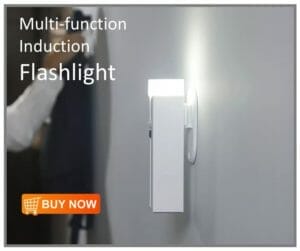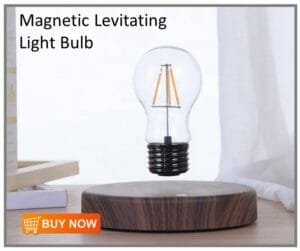Wind turbine accident that shaped the renewable industry.
It is so little we know about wind turbine accidents until this event in October of 2013 happened that took the life of two young mechanics.
Since then, all misfortunes related to wind turbines have been uncovered.
But how did that incident trigger the underrated statistics?
The simplest answer: it compromised safety measures.

The two men, only 19 and 21 years of age were burnt on top of a wind turbine in Deltawind’s Piet de Wit wind farm in the Netherlands.
Both were 80 meters above ground, doing routine maintenance only for the fire to trap and chase them in the end.
“Because of the height, the fire department initially had trouble extinguishing the fire in the engine room,” says the Netherlands Times.
It said that the fire broke out in the afternoon with help, in the form of a large crane, coming in the evening backed by a group of firefighters.
But everything was too late.
The fire caught the two.
One of them fell to the ground while the other was recovered at the top.

If it’s any consolation, two other mechanics on duty were able to survive the wrath of such an accident.
A short circuit was deemed to be the cause of the accident, according to Deltawind, but they still weren’t sure.
The turbine involved was a 1.75 megawatt Vestas V-66, which is coincidentally being sold online.
Buyers may or may not have an idea of the risks of buying these turbines.
This is where the riot began for accidents in the wind industry.
It was discovered that there are actually wind turbine accidents happening but are rather not being given attention.
The “wind turbine fire” Google alert had enabled this to be a hot topic, especially for Vestas.

In 2011, the company had a wind turbine fire but was blamed on a brake problem.
The next year, a Vestas V-112 wind turbine in Germany caught fire, and pointed to the fire on a loose connection that caused an arc flash.
This is other than the arc fire that happened in Vestas V-90 turbine in Spain upon maintenance.
Not only that: in 2012, there was also a Vestas turbine that collapsed in Ireland.
The bad news kept on coming as, in 2013, the company’s V-80 wind turbine in Canada also burned. And that’s just Vestas.
Gamesa, a Spanish manufacturing company principally involved in the fabrication of wind turbines and the construction of wind farms, was also involved in severe wind accidents.
That includes the 2009 fire in Iberdrola’s Locust Ridge project, the 2012 fires in Iberdrola’s Barton 2 Wind Power Project in Iowa, and the North Allegheny Ridge.
Both companies were given warnings on faulty models back in the late 1990s and early 2000s.
The continuing accidents just prove that they have not shaped up their turbines.
Wind Turbine 101 for Dummies.
If you are new to the renewable energy business or wind turbine concept, here are the basics.
What are the Dangers and Safety Hazards in Wind Turbines?
Wind turbines are used to convert wind energy into electricity. They work by turning a blade on a shaft, which rotates the turbine blades. The blades generate electricity as they turn and this energy is transferred to the ground through an electrical grid.

Despite their many benefits, wind turbines can also pose significant safety hazards. These hazards include:
- The blades of a wind turbine can cause serious injuries if they become airborne.
- The towers that support the turbines can also be dangerous and should be avoided if possible. Tower collapses have killed dozens of people in recent years, most notably in the Netherlands, Spain, and Denmark.
- If the blades of a wind turbine become entangled in objects they can break and cause injuries.
- If the turbine fails, it can cause a deadly explosion.
- Wind turbines generate noise that can be disruptive and harmful to human health.
- Wind turbines can also damage property and interfere with aircraft.

What is a Wind Turbine?
A wind turbine is an energy-producing machine that uses the force of the wind to turn a rotor.
These machines are used to generate renewable energy, such as electricity.
Wind turbines can be used for a variety of purposes, including generating power for homes, businesses, and industrial facilities.
The size and type of wind turbine depending on the application.
A wind turbine is a device that converts wind into mechanical power.
It is one of the most effective means of generating electricity.

How Does A Wind Turbine Work?
A wind turbine is a device used to convert the wind into electrical power.
It consists of a tower with blades that turn to generate electricity.
Powered by the wind, turbines are an environmentally friendly way to produce electricity.
Why Use A Wind Turbine?
There are many benefits to using a wind turbine for renewable energy.
Wind turbines are one of the most efficient sources of electricity generation, and they require very little maintenance.
In addition, wind turbines generate electricity 24/7, which is an advantage over other forms of renewable energy like solar panels.
Lastly, wind turbines are often located near bodies of water, which makes them a good option for generating power from the ocean.

Types Of Wind Turbines
There are three main types of wind turbines: horizontal-axis, vertical-axis, and rotors.
Horizontal-axis turbines are the most common type and work by using the wind to turn a blade around a hub.
Vertical-axis turbines have blades that point down into the wind and work by using the wind to rotate the turbine.
Rotors use blades that are turned by an electric motor and are more efficient than horizontal-axis turbines because they can operate in stronger winds.
Where To Install A Wind Turbine
Wind turbines are installed on windy sites to produce renewable energy.
The most common types of wind turbines are the horizontal axis wind turbine and the vertical axis wind turbine.
Horizontal axis wind turbines use the winds force to turn the blades while vertical axis turbines use the winds force to rotate a shaft that sends power down to a generator.
A wind turbine is an excellent way to generate renewable energy.
It is a simple and efficient device that can be installed in almost any location.
Other wind turbine stories
Instead of Spinning, the Wings of these Wind Turbines are Flapping
Source: Wind Action














